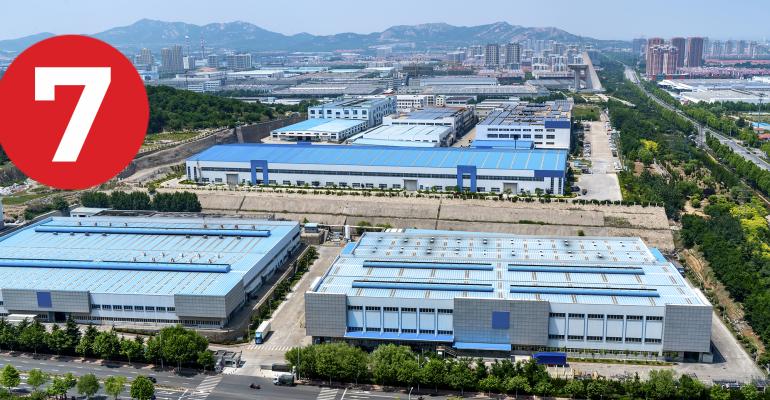- Tech Companies Slowly Shift Production Away from China “The fracturing supply chain is rippling across Asia, causing a spike in industrial land prices in Vietnam, a revival of manufacturing in Malaysia and a surge in demand for low-wage workers in India. For China, it is siphoning away manufacturing activity when the country is reeling from its slowest economic growth in decades. ‘Everyone is thinking about moving, even if they’re not acting yet,’ said Anna-Katrina Shedletsky, founder of Instrumental, a Bay Area company that remotely monitors assembly lines for electronics companies.” (The New York Times)
- Student Housing’s Record-Breaking Streak Continues “The student housing sector’s stellar performance has not slowed in the second quarter of 2022, according to a recent Yardi Matrix report. The preleasing rate for the upcoming fall term, along with rent growth among Yardi 200 universities, hit record highs in June. While postsecondary enrollment continued on a downward spiral, community colleges and smaller institutions have mostly taken the hit from falling student enrollment rates.” (Multi-Housing News)
- Yes, Zoom Has an Office. No, It’s Not a Place to Work. “I had come to the offices of the company that helped cripple the office to understand how it was handling the disruptions of hybrid work vexing businesses around the world. There has never been so much uncertainty about who should work where and when. The abrupt transition to remote work was smoother than adapting to the current reality, in which some people stay home and others schlep back to the office. ‘It’s the million-dollar question everybody is still trying to answer,’ Kelly Steckelberg, Zoom’s chief financial officer, told me on the weirdest Zoom of my life. ‘I don’t know if we’ve exactly found the right balance yet.’” (The Wall Street Journal)
- Scant Opportunities Pushing Women in CRE to Seek New Career Options “A new report by the CREW Network focused on women in the commercial real estate workforce, which offers a significant chance to gauge pandemic-era shifts in equity and opportunity in the industry, found women have left or plan to leave the profession in significant numbers. Combined with survey results that found much more openness to move to different firms or find other employment, the report suggests many women in CRE haven’t found the inclusion, compensation or — most important to the majority of respondents — opportunities and career support they would like.” (Bisnow)
- Silverstein CEO: Workers Will Return to Office After Labor Day “It’s been a year since Manhattan landlords first pinned their hopes on Labor Day as the end of the remote-work era, and the city’s office buildings haven’t gotten much busier. But Silverstein Properties CEO Marty Burger says he’s confident more workers will finally return to their desks in the coming months.” (The Real Deal)
- Amazon Took All U.S. Solar Rooftops Offline Last Year After Flurry of Fires, Electrical Explosions “On the afternoon of April 14, 2020, dozens of firefighters arrived at an Amazon warehouse in Fresno, California, as thick plumes of smoke poured from the roof of the 880,000-square-foot warehouse. Some 220 solar panels and other equipment at the facility, known as FAT1, were damaged by the three-alarm fire, which was caused by ‘an undetermined electrical event within the solar system mounted on top of the roof,’ Leland Wilding, Fresno’s fire investigator, wrote in an incident report.” (CNBC)
- More People Are Moving into High-Draught Areas “There’s a picture of the brave people who go into clear danger, and everyone should be thankful for police, fire, and other emergency workers. But how do you classify many who go into areas that are in fundamental ways dangerous, like ongoing droughts? Like consumers. A Redfin analysis says that in many areas experiencing heavy levels of drought, more people are moving in than out, with ‘74% of U.S. metros with more than half of homes facing intense drought saw more people move in than out this year.’ Those homes, in 34 out of 129 analyzed metros, represent about $17 trillion in collective value, or a 42% jump from a year ago.” (GlobeSt.com)
0 comments
Hide comments





